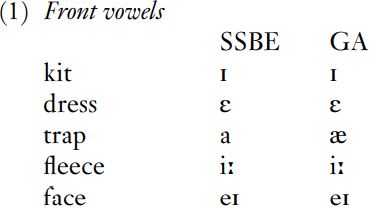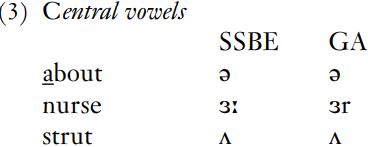


 Grammar
Grammar
 Tenses
Tenses
 Present
Present
 Past
Past
 Future
Future
 Parts Of Speech
Parts Of Speech
 Nouns
Nouns
 Verbs
Verbs
 Adverbs
Adverbs
 Adjectives
Adjectives
 Pronouns
Pronouns
 Pre Position
Pre Position
 Preposition by function
Preposition by function 
 Preposition by construction
Preposition by construction
 Conjunctions
Conjunctions
 Interjections
Interjections
 Grammar Rules
Grammar Rules
 Linguistics
Linguistics
 Semantics
Semantics
 Pragmatics
Pragmatics
 Reading Comprehension
Reading Comprehension|
Read More
Date: 2024-05-06
Date: 2024-05-31
Date: 2024-02-13
|
Front vowels are produced with the front of the tongue raised towards the hard palate (although not raised enough, remember, to obstruct the airflow and cause local friction; vowels are approximants). The vowels in (1) are front. These could, in principle, equally be described as palatal, and this might be helpful in making phonological rules transparent, the rule palatalising velar /k g/ before front vowels in kitchen, key, give, geese looked rather perplexing as the relationship between palatal and front was not obvious. However, calling front vowels palatal would be misleading, since frontness covers a larger area than [palatal], as we shall see below; and it contrasts with completely different alternatives, namely central and back, rather than labial, alveolar, dental, velar and so on.

Conversely, back vowels have the back of the tongue raised, towards the soft palate or velum. The vowels in (2) are back.

There is also a class of vowels between front and back: these are known as central vowels, and involve a raising of the body of the tongue towards the area where the hard and soft palate join. Central vowels are exemplified in (3). The most common of these in English, [ə], is known as schwa, and only appears in unstressed syllables.

|
|
|
|
تفوقت في الاختبار على الجميع.. فاكهة "خارقة" في عالم التغذية
|
|
|
|
|
|
|
أمين عام أوبك: النفط الخام والغاز الطبيعي "هبة من الله"
|
|
|
|
|
|
|
قسم شؤون المعارف ينظم دورة عن آليات عمل الفهارس الفنية للموسوعات والكتب لملاكاته
|
|
|